Test device courtesy of notebooksbilliger.de
See our Top 10 Notebooks:
» Multimedia, » Gaming, » Lightweight Gaming
» Budget Office, » Business, » Workstations
» Subnotebooks, » Utrabooks, » Convertibles
» Budget Office, » Business, » Workstations
» Subnotebooks, » Utrabooks, » Convertibles
» Top 10 under 300 Euros, » under 500 Euros
» Best Notebooks for University Students
» Top Windows alternatives to Apple's MacBook series
» Best Notebook Displays
» Best Notebooks for University Students
» Top Windows alternatives to Apple's MacBook series
» Best Notebook Displays
Top 10 Tablets / Smartphones:
Case & Connectivity
The matte black casing of our review sample corresponds to the typical Lenovo-style of this price range. Thanks to the selected surface texture, the device is pleasant and safe to hold. It is not a lightweight at 2.2 kilograms. The height of 2.5 centimeters is also within the standards. Unfortunately, the device's haptics are not convincing. We often discover sharp edges and inadequately rounded parts. Furthermore, the sharp edges do not indomitably contribute to carrying comfort. The display cover and keyboard unit dent easily. The maintenance hatch on the underside does not close flush with the casing. The display is not easy to open despite small hinges, but it only shakes marginally. We cannot say how the hinges will behave after prolonged use. Overall, the build has clear room for improvement.
The mentioned maintenance hatch allows accessing hard drive, working memory, fan and Wi-Fi module. The battery can be removed separately without releasing screws.
We check the SD-card reader's performance with our Toshiba Exceria Pro SDXC 64 GB UHS-II reference card. The read rate is 33.62 MB/s and the write rate 31.19 MB/s in ASSD benchmark. We achieved 26.5 MB/s in copying standard JPG image files (approx. 5 MB each). That is an outcome in the lower field of rates that we have observed.
Size Comparison
Input Devices
The installed chiclet keyboard shines with an ideal key size. The drop is a bit too short and soft, and the keyboard unfortunately yields slightly when typing on it. However, the input device should be satisfactory for occasional office work.
Thanks to its lightly roughened surface, the touchpad situated in the lower area has superb gliding qualities. Multi-touch gestures, such as scrolling through websites, are identified and implemented impeccably. The touchpad always responded reliably to inputs with exception of the corners.
Display
| |||||||||||||||||||||||||
X-Rite i1Pro 2
Maximum: 210 cd/m² Average: 195.3 cd/m² Minimum: 10 cd/m²Brightness Distribution: 88 %
Center on Battery: 207 cd/m²
Contrast: 589:1 (Black: 0.35 cd/m²)
ΔE Color 8.96 | 1.01-23.34 Ø6.8
ΔE Greyscale 9.27 | 0.79-16.8 Ø7
56.26% sRGB (Argyll) 35.89% AdobeRGB 1998 (Argyll)
Gamma: 2.38
| Lenovo G51-35 80M8002HGE Radeon R5 (Beema/Carrizo-L), A8-7410, WDC Scorpio Blue WD10JPCX-24UE4T0 | Toshiba Satellite C55D-C-10P Carrizo-L Radeon R5 (Beema/Carrizo-L), A8-7410, Toshiba MQ01ABD100 | Acer Aspire ES1-521-87DN Radeon R5 (Beema/Carrizo-L), A8-6410, Western Digital Scorpio Blue WD5000LPVX | Fujitsu Lifebook A514 HD Graphics 4400, 4005U, Samsung SSD PM871 MZ7LN128HCHP | HP 350 G2 L8B05ES Radeon R5 M240, 5200U, Seagate Momentus ST750LM022 HN-M750MB | |
|---|---|---|---|---|---|
| Screen |
6%
|
-1%
|
1%
|
-2%
| |
| Brightness | 195 | 220
13%
| 238
22%
| 216
11%
| 231
18%
|
| Brightness Distribution | 88 | 85
-3%
| 88
0%
| 84
-5%
| 86
-2%
|
| Black Level * | 0.35 | 0.28
20%
| 0.42
-20%
| 0.39
-11%
| 0.53
-51%
|
| Contrast | 589 | 771
31%
| 583
-1%
| 592
1%
| 474
-20%
|
| Colorchecker DeltaE2000 * | 8.96 | 10.46
-17%
| 10.49
-17%
| 8.08
10%
| 7.92
12%
|
| Greyscale DeltaE2000 * | 9.27 | 11.5
-24%
| 11.47
-24%
| 9.05
2%
| 8.9
4%
|
| Gamma * | 2.38 | 2.29 | 2.52 | 2.44 | 2.18 |
| CCT | 11213 | 12724
13%
| 13286
18%
| 10926
-3%
| 9917
-12%
|
| Color Space (Percent of AdobeRGB 1998) | 35.89 | 40
11%
| 38
6%
| 41
14%
| |
| Color Space (Percent of sRGB) | 56.26 | 62
10%
| 60
7%
| 65
16%
|
* ... smaller is better
Display Response Times
| ↔ Response Time Black to White | ||
|---|---|---|
| 25.6 ms ... rise ↗ and fall ↘ combined | ↗ 19.6 ms rise | |
| ↘ 6 ms fall | ||
| The screen shows relatively slow response rates in our tests and may be too slow for gamers. In comparison, all tested devices range from 0.8 (minimum) to 240 (maximum) ms. » 35 % of all devices are better. This means that the measured response time is better than the average of all tested devices (28.6 ms). | ||
| ↔ Response Time 50% Grey to 80% Grey | ||
| 43.6 ms ... rise ↗ and fall ↘ combined | ↗ 23.2 ms rise | |
| ↘ 20.4 ms fall | ||
| The screen shows slow response rates in our tests and will be unsatisfactory for gamers. In comparison, all tested devices range from 0.9 (minimum) to 172 (maximum) ms. » 54 % of all devices are better. This means that the measured response time is similar to the average of all tested devices (43.4 ms). | ||
Screen Flickering / PWM (Pulse-Width Modulation)
| Screen flickering / PWM detected | 200 Hz | 90 % brightness setting | |
The display backlight flickers at 200 Hz (Likely utilizing PWM) Flickering detected at a brightness setting of 90 % and below. There should be no flickering or PWM above this brightness setting.
The frequency of 200 Hz is relatively low, so sensitive users will likely notice flickering and experience eyestrain at the stated brightness setting and below.
In comparison: 56 % of all tested devices do not use PWM to dim the display. If PWM was detected, an average of 552 (minimum: 43 - maximum: 10420) Hz was measured.
| |||
Performance
Processor
The incorporated AMD A8-7410 has a base clock of 2.2 GHz that can reach up to 2.5 GHz via Boost. The manufacturer states a maximum power dissipation of 12 - 25 watts (TDP). We test the quad-core processor's performance with Cinebench R15.
The review sample achieves 174 points in the multi-core test, which is on par with Toshiba's rival.Acer's ES1-521 still sports AMD's A8-6410 from the former generation, and consequently its score is 20 points lower.
According to Cinebench R15, performance losses will have to be counted with when often using the review sample without its power supply. Only 146 points is reached in battery mode.
Discussion
System Performance
The 15.6-inch laptop's system generally runs quite smoothly. Occasional lags occurred when multitasking. Users who want a responsive system might consider upgrading via an SSD. With 1960 points, the system is on par with its rivals in PCMark 8 Home.
| PCMark 8 | |
| Lenovo G51-35 80M8002HGE | |
| Home Score Accelerated v2 | |
| Acer Aspire ES1-521-87DN | |
| Home Score Accelerated v2 | |
| Toshiba Satellite C55D-C-10P Carrizo-L | |
| Home Score Accelerated v2 | |
| PCMark 8 Home Score Accelerated v2 |
| 1960 points |
Help
Storage Device
A 5400 RPM, 1 TB hard drive is installed for storing data. The storage by Western Digital has sequential read and write rates of approximately 100 MB/s. The chosen hard drive model and the resulting outcomes are common for this low price range, and consequently our selection of rivals is on par.
| Lenovo G51-35 80M8002HGE Radeon R5 (Beema/Carrizo-L), A8-7410, WDC Scorpio Blue WD10JPCX-24UE4T0 | Acer Aspire ES1-521-87DN Radeon R5 (Beema/Carrizo-L), A8-6410, Western Digital Scorpio Blue WD5000LPVX | Toshiba Satellite C55D-C-10P Carrizo-L Radeon R5 (Beema/Carrizo-L), A8-7410, Toshiba MQ01ABD100 | HP 350 G2 L8B05ES Radeon R5 M240, 5200U, Seagate Momentus ST750LM022 HN-M750MB | |
|---|---|---|---|---|
| CrystalDiskMark 3.0 |
10%
|
-8%
|
-10%
| |
| Read Seq | 100 | 109.6
10%
| 105.8
6%
| 100.2
0%
|
| Write Seq | 99.85 | 107.5
8%
| 98.25
-2%
| 97.84
-2%
|
| Read 4k | 0.424 | 0.419
-1%
| 0.358
-16%
| 0.364
-14%
|
| Write 4k | 0.966 | 1.171
21%
| 0.776
-20%
| 0.738
-24%
|
Graphics Card
We know AMD's integrated Radeon R5 from Acer's Aspire ES1. The internal graphics card is also used in the newer Carrizo L platform here. Its application field is mainly limited to basic routine tasks. It will hardly be possible to submerge into the world of computer games. 3DMark 11 confirms this insight. It still achieves a solid 120 points more with 860 points than the almost identically built Toshiba's Satellite C55D.
The additional performance loss in battery mode is particularly aggravating: We only achieve 647 points as soon as the review sample is used without its power supply.
| 3DMark 11 | |
| Lenovo G51-35 80M8002HGE | |
| 1280x720 Performance | |
| Acer Aspire ES1-521-87DN | |
| 1280x720 Performance | |
| Toshiba Satellite C55D-C-10P Carrizo-L | |
| 1280x720 Performance | |
| Acer Aspire E5-722-662J | |
| 1280x720 Performance | |
| HP Pavilion 13-a093na x360 | |
| 1280x720 Performance | |
Gaming Performance
We already discovered the meager performance in the graphics benchmark, which also indicates limited gaming readiness. We only managed smooth frame rates using minimum setting in the game BioShock Infinite. However, users who want occasional diversion from office routine should either opt for older classics or prefer casual games from the Windows Store.
| BioShock Infinite | |
| 1280x720 Very Low Preset | |
| Lenovo G51-35 80M8002HGE | |
| HP Pavilion 17-f050ng | |
| HP Pavilion 13-a093na x360 | |
| 1366x768 Medium Preset | |
| HP Pavilion 17-f050ng | |
| Lenovo G51-35 80M8002HGE | |
| HP Pavilion 13-a093na x360 | |
| low | med. | high | ultra | ||
| BioShock Infinite (2013) | 33.7 | 18.05 | 15.37 | fps |
Emissions & Energy Management
Noise Level
| Idle |
30.6 / 30.6 / 30.6 dB(A)
| ||||
| HDD | 30.7 dB(A) | ||||
| Load | 31.5 / 31.5 dB(A) | ||||
30 dB
silent
40 dB(A)
audible
50 dB(A)
loud | |||||
min:
| |||||
Temperature
Speakers
Power Consumption
At up to 10.6 watts, the review sample already proves thirstier than some other rivals based on Intel components. The similarly built Toshiba Satellite C55D even requires up to 12.1 watts. Our review sample only demands 30 watts at most during load, which is on par with the rivals. The included 45-watt power supply thus easily copes with all requirements.
Power Consumption
| Off / Standby | |
| Idle | |
| Load | |
| Key: min: | |
Battery Runtime
Lenovo installs a 4-cell battery with a capacity of 31.7 Wh for mobile use. We test its endurance in a real-world scenario by simulating Internet browsing at a brightness of 150 cd/m². Our review sample went idle after approximately 3.5 hours. Acer's Aspire ES1 does a much better job with a runtime of almost five hours.
| Battery Runtime - WiFi Websurfing 1.3 | |
| Acer Aspire ES1-521-87DN (Edge 25.10586.0.0) | |
| Toshiba Satellite C55D-C-10P Carrizo-L | |
| Lenovo G51-35 80M8002HGE | |
Battery Runtime
| WiFi Surfing v1.3 |
| 3h 25min |
Verdict
Lenovo G51-35 80M8002HGE - 05/13/2016 v5.1
Nino Ricchizzi
Nino Ricchizzi
Office - Weighted Average
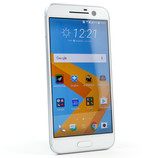
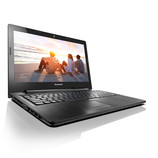
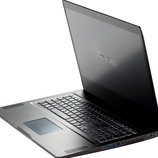
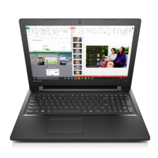
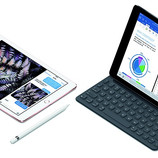

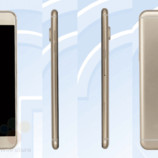
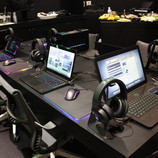
No comments:
Post a Comment